
Aichi
D3A1 'Val'
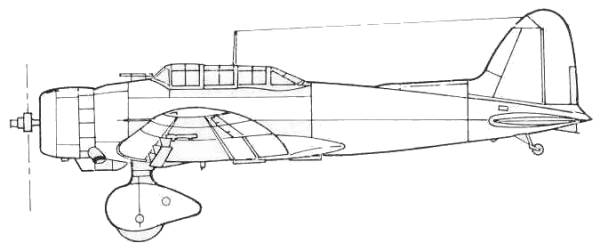
On
December
7, 1941 the D3A1 became the first Japanese aircraft to drop
bombs on American targets. Despite its apparent obsolescence the
aircraft achieved considerable success during the first ten months of
the war and sank more Allied fighting ships than any other single type
of Axis aircraft. During the summer of 1936 the Japanese Navy issued
an
11-Shi specification calling for a carrier based dive bomber of
monoplane design. Three companies submitted proposals, Aichi, Nakajima
and Mitsubishi, Aichi and Nakajima each received a contract for two
prototypes. Aichi's entrant was a low winged monoplane with elliptical
wings inspired by those of the Heinkel He 70. In spite of the inherent
drag of a fixed undercarriage, this type of landing gear was retained
as performance gains stemming from the use of a retractable landing
gear were found to be insufficient to justify the extra weight and
maintenance problems.
The
first
prototype powered by a nine cylinder 710 hp radial was completed
in December of 1937 and flew a month later. Initial results were
disappointing as the aircraft was under powered, suffered instability
in
wide turns and the dive brakes vibrated alarmingly when used. On the
positive side the aircraft possessed a strong air frame and overall
handling characteristics were satisfactory.
To
correct
the deficiencies the second aircraft was extensively modified
before being flown. A more powerful engine of 840 hp was installed,
the
cowling was redesigned, the area of the vertical tail surfaces was
enlarged and strengthened dive brakes were installed. The main
modification affected the wings which were increased in span while the
outer sections of the leading edges were cambered down to prevent snap
rolling in tight turns. Thus modified the D3A1 won the competitive
trials over the Nakajima D3N1 in December of 1939.
The
production
D3A1's were further modified and featured slightly smaller
wings and were powered by a 1,000 hp engine. The aircraft included
numerous internal changes that increased it loaded weight. The
directional stability problem was finally eradicated with the fitting
of a large dorsal fin and the aircraft became highly maneuverable, a
characteristic which enabled it occasionally to be used as a fighter
in
spite of the fact it only carried two forward firing 7.7mm machine
guns. The normal defensive load was a single 250 kg bomb.
The
Kit
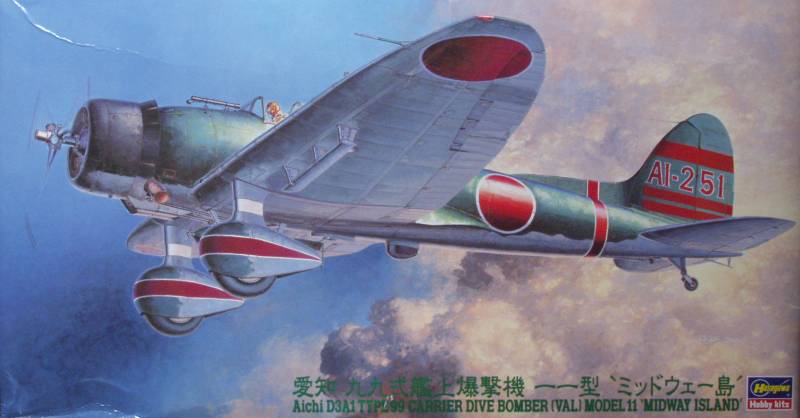
The Hasegawa kit comes in a medium sized top open box that they use for
a lot of their 1/48 kits and as usual has some great artwork on the
top. Inside the box is one bag with all the sprues inside including the
clear parts, not the best packaging. As a result a number of the parts
had some scuffing on them but nothing that won't buff out. The clear
parts survived without damage. This kit dates back to the mid 90's. It
is molded in light gray and the surface detail consists of recessed
panel lines and fasteners and rivets. The panel lines are about normal
for the scale.The surface finish is smooth and I found no noticeable
surface defects in any of the major air frame parts. The mold parting
seams on two sided parts are minimal.
In spite of the
age of the kit
there was very little flash evident. The cockpit is fairly well
detailed for the scale and age of the kit and I'm sure most will be
satisfied with the supplied level of detail. The cockpit makes up as a
complete assembly which is them mounted to the fuselage before joining
the halves. There are some holes that need to be opened up in the lower
wing to attach included bombs and this needs to be done in advance of
assembling the wings. The engine is a one piece casting to which you
install a gearbox. It should look nice when painted up as it has a good
depth of detail. The kit was supposed to have poly caps to allow
installing the prop after assembly but mine seemed AWOL. The kit
includes three bombs, a 250 kg bomb for under the fuselage and two 60
kg bombs for under the wings. The tires are weighted. I have stopped
doing parts counts on kits, not sure anyone really cares and many of
the newer kits tell you on the box how many parts are there. In the
case of duplicate sprues only one is shown. see below.
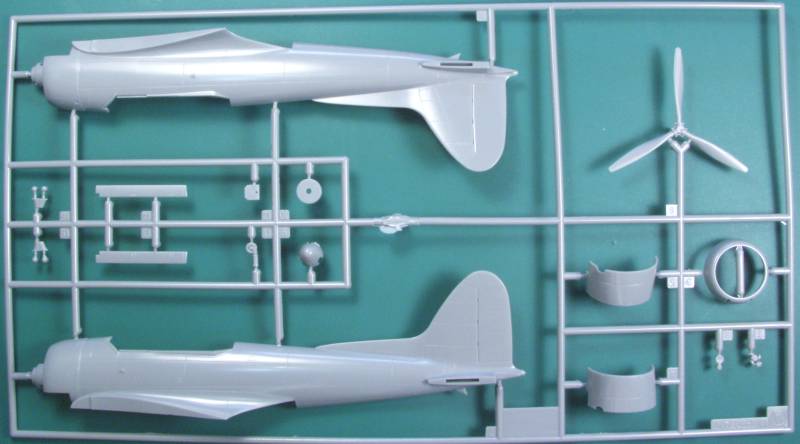
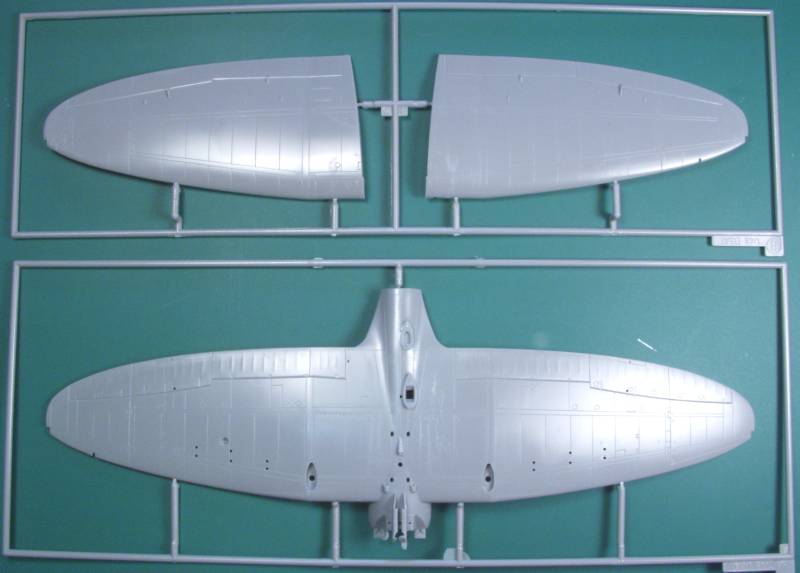
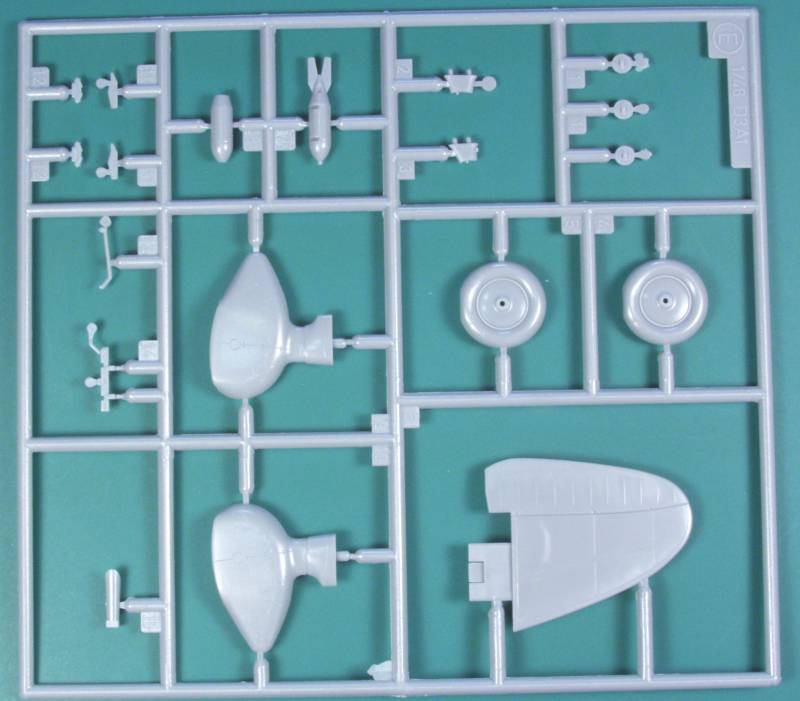
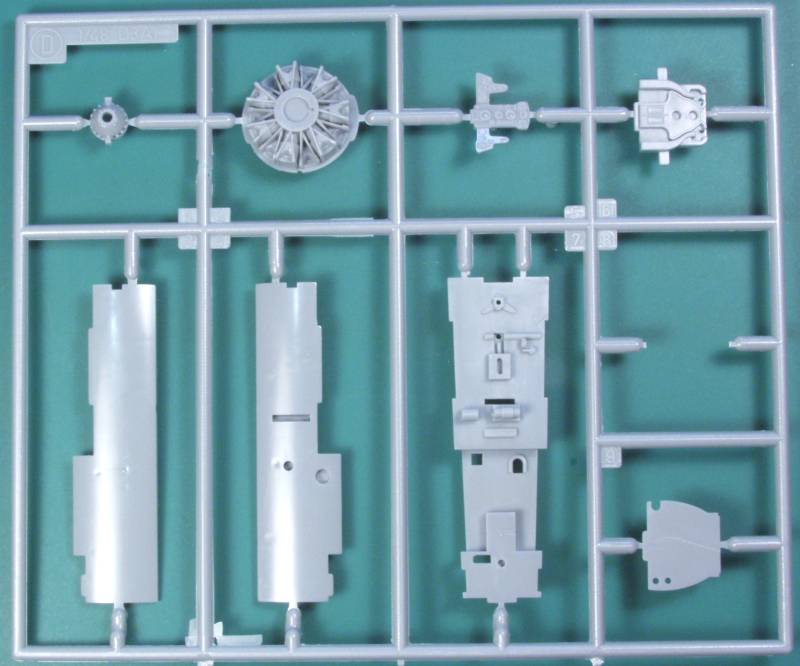
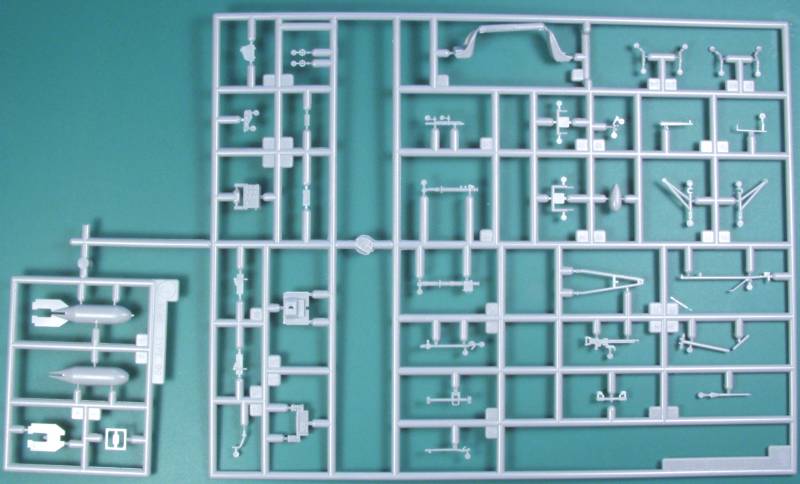
The
clear
parts are relatively thin but when you stack them as you would
if
you
want the canopy open the effect may make them look overly thick.
The
clarity is good but a masking kit would be helpful ! Also
included
besides the canopies are navigation light lenses, a landing
light lens
and a gun sight. See below.
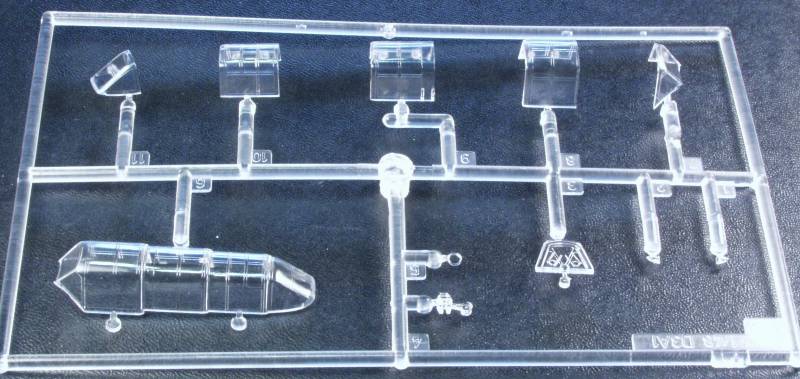
The
decals
are typical old school Hasegawa, thick and with the white that
is a cream color. There is a lot of extra clear film on some of
the
them and the registration is poor. The sheet also has
decals for the instrument panel. The decals provide markings for
two
aircraft from the Battle of Midway, one from the Akagi and one
from the
Kaga. While I haven't done it yet myself I would highly
recommend
finding some after market decals as I suspect working with these
is
going to frustrating. See Below.
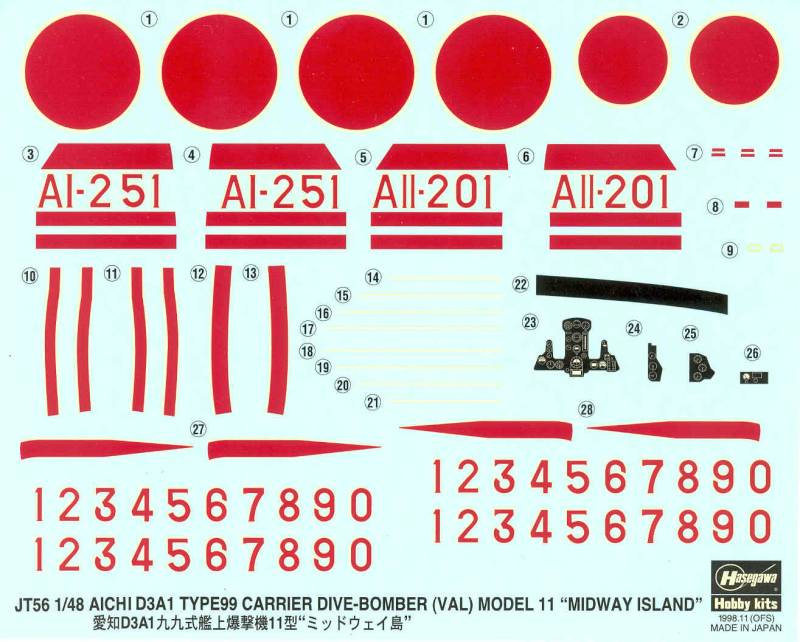
The
instructions
follow the Hasegawa pattern of printing them on a
long
sheet which is then folded to fit the box creating
separate panels. In
this case the count is eight. panel one is a brief
history and
specifications in Japanese and English, panels two
through four are
assembly steps, panel five has a parts map and
color chart with Gunze
numbers and generic color names, panels six and
seven are painting and
marking diagrams and panel eight includes decal
installation
instructions and the usual safety and health
warnings.
After
Market
Goodies
Strange
as it may seem I didn't buy this set for the Val but to use it
as a
basis to build an interior for the old Fujima 'Jake',
fortunately Lone
Star Models made a set for the 'Jake' so it now will most
likely get
used on this kit. This is CMK's set # 4056 and it is a resin
set
designed to replace the kit's cockpit. The parts are
molded in a
cream colored resin and has extremely well molded details with
a
minimum of pin holes and short shots. According to the
review
linked at the end of this review in which the author used the
same set
it fits pretty good as after market sets go. It also includes
photo
etch fret with lots of little goodies and a film for the
instrument
panel dials. It also comes with a vacuformed canopy but mine
has
crawled off and hid some where so there is no photo of it
here. See
below.
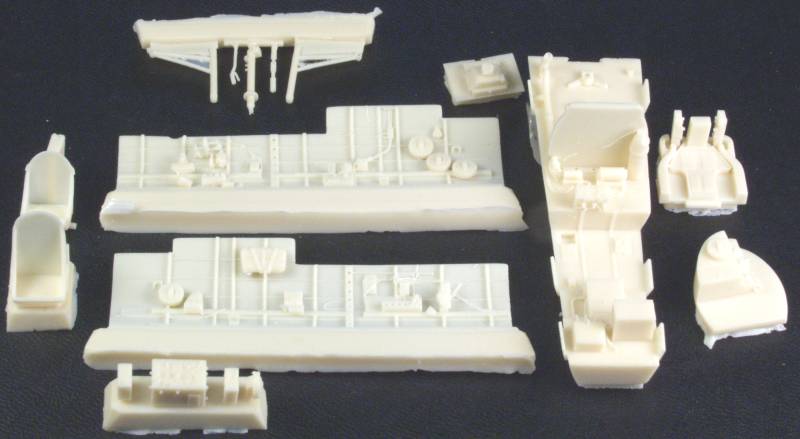
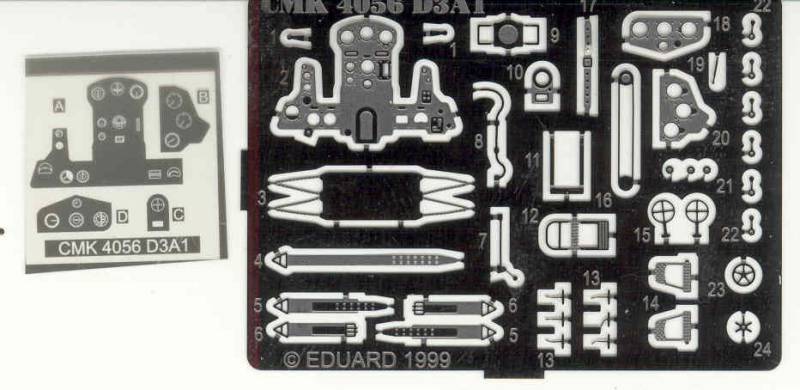
Conclusions
Although
not a new kit it is still nicely detailed and by all
accounts the fit
is good and as such gets my recommendation for modelers with
a bit of
experience.
Links
to kit build or reviews
A build / review can be
found here.
References
Japanese Aircraft of the
Pacific War by R.J. Francillon
Back to the Misc Japanese page
Updated 7/5/13











